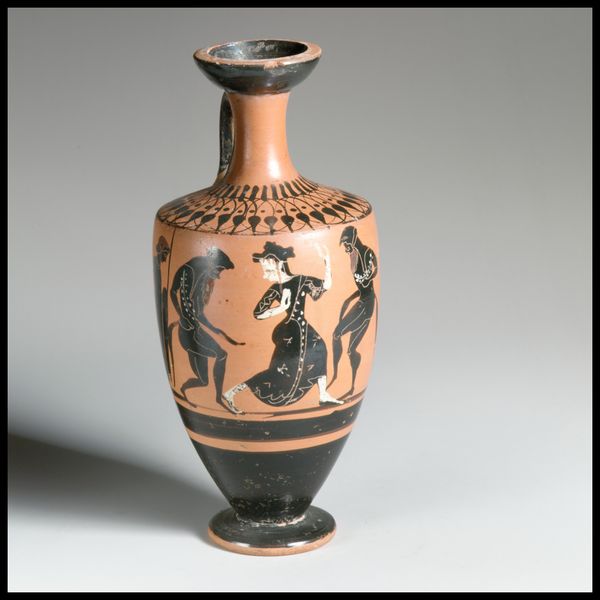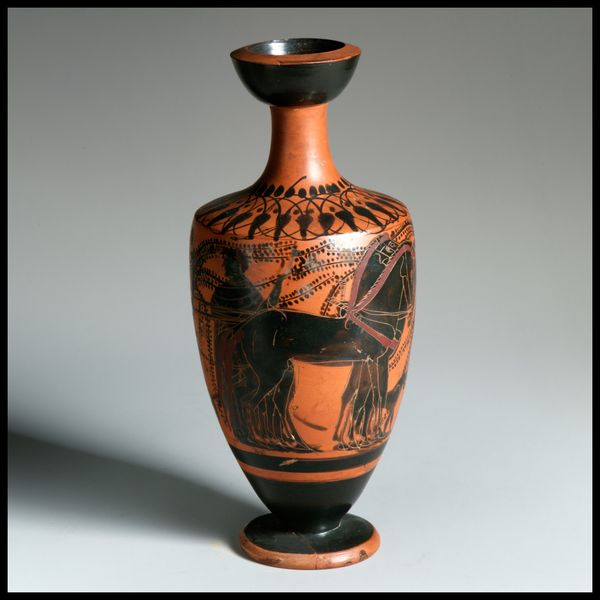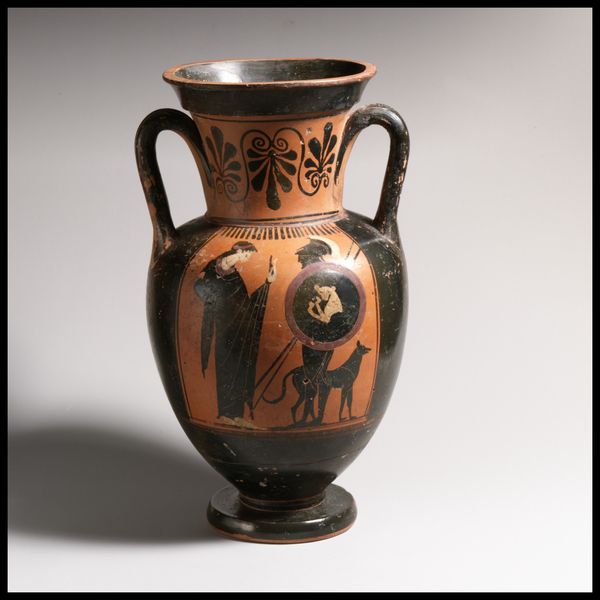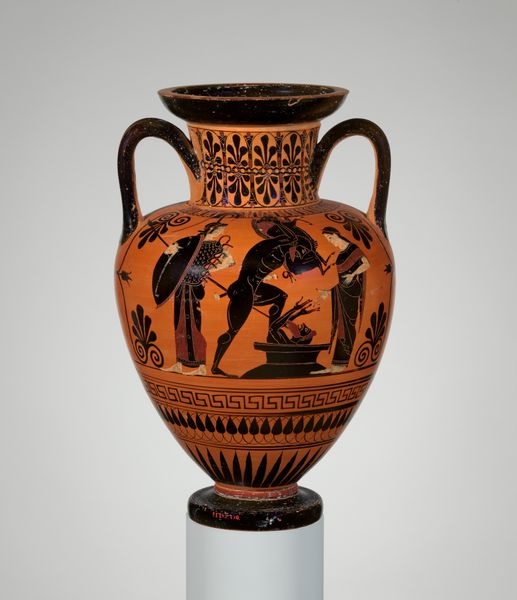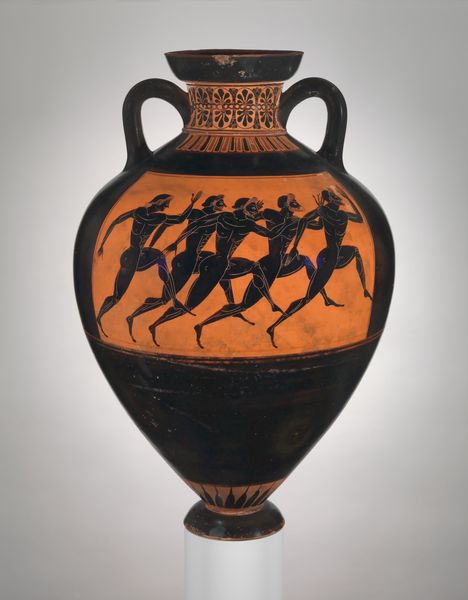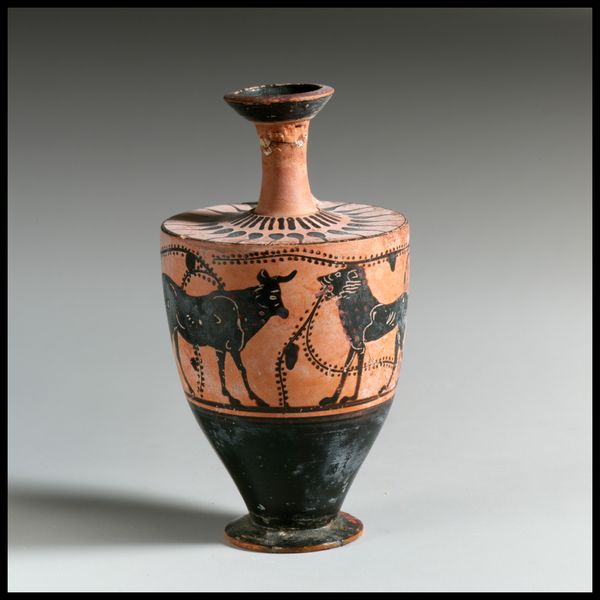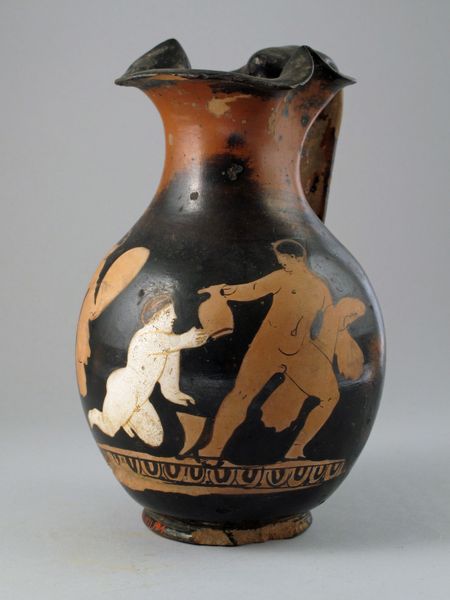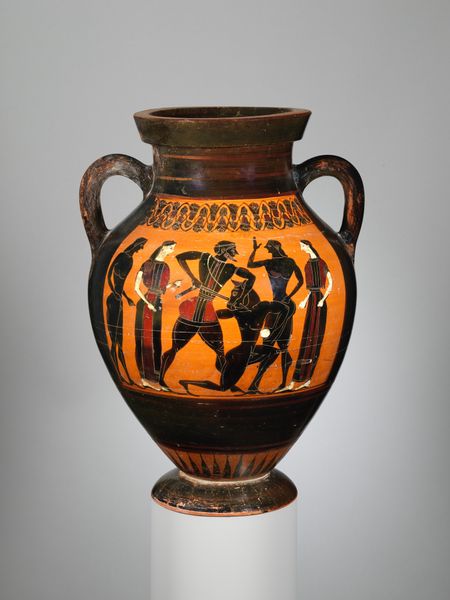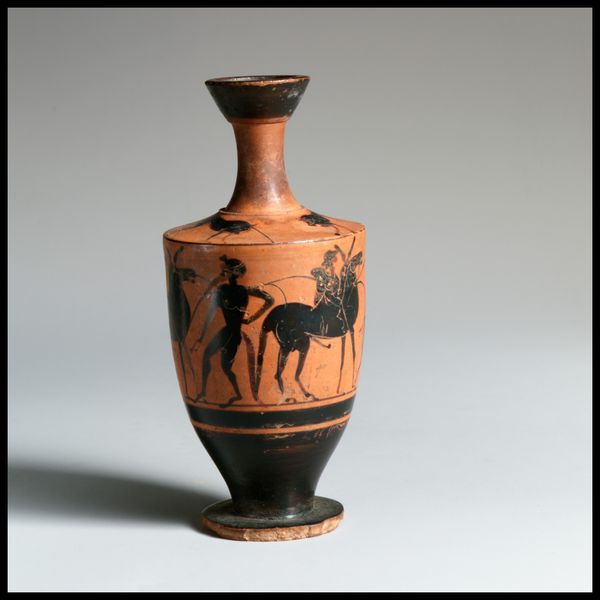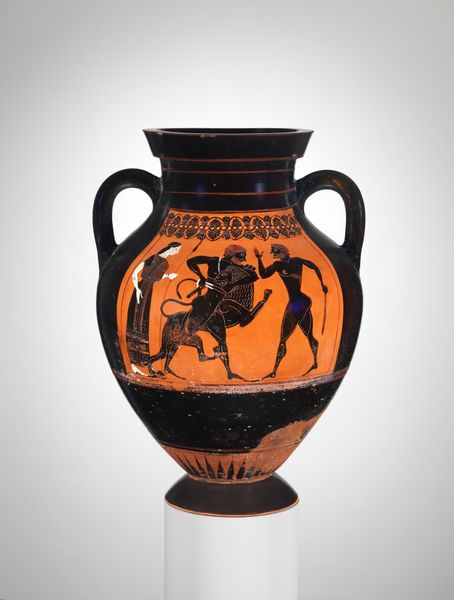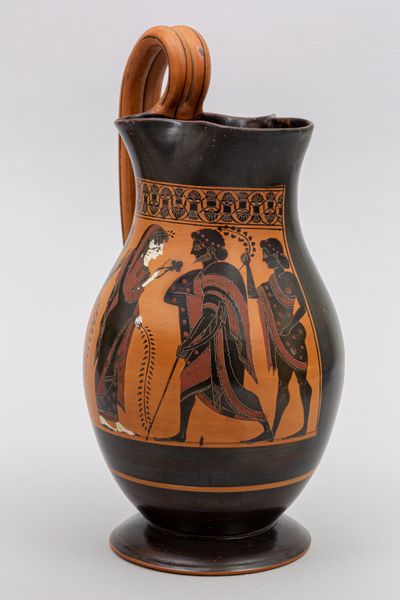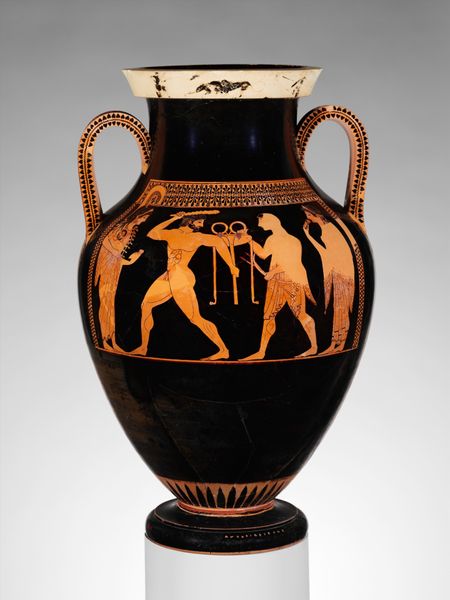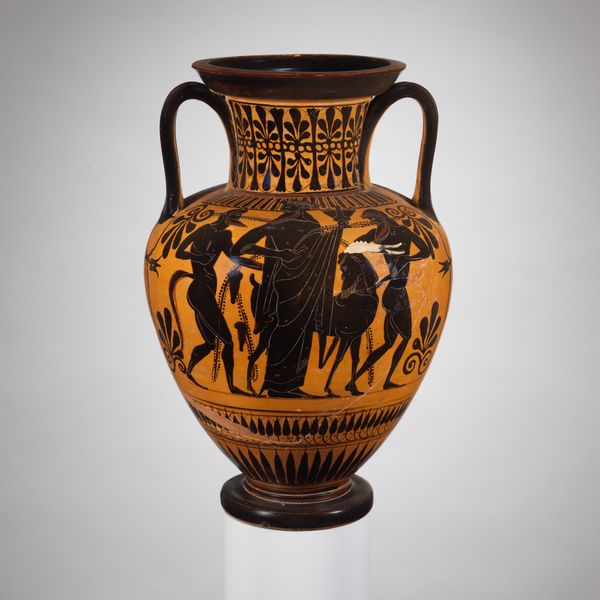
drawing, terracotta
#
drawing
#
greek-and-roman-art
#
figuration
#
ancient-mediterranean
#
terracotta
#
athlete
#
male-nude
Dimensions: H. 9 5/16 in. (23.7 cm)
Copyright: Public Domain
Curator: Looking at this vessel, I'm struck by the intense physical activity depicted. The red-figure athletes almost seem to pulse with energy against that warm terracotta ground. Editor: Indeed. What we're observing is a terracotta lekythos, dating back to around 525 BC. Found now at the Metropolitan Museum of Art, this oil flask provides a fascinating window into the ancient Greek world. Curator: The dominance of the male nude form is impossible to overlook, what could these athletic games suggest to its contemporary viewers? Editor: The images probably held deeply symbolic value, especially related to idealized concepts of masculine youth, strength, and civic duty in ancient Greek society. Greek athletics were ritualized activities, demonstrating adherence to ideals and community values. It might also serve as an indicator of status—sport and dedication to physical form were marks of elite citizenry. Curator: Precisely. One might even argue the continuous band of athletes functions as a reminder of perpetual self-improvement or the ongoing civic responsibility inherent in being a citizen. The athlete's body here symbolizes not just physical power, but moral strength. Editor: Considering its function, an oil flask may have been intended as a grave offering. Perhaps the deceased identified with athleticism in life, and the vessel acted as a poignant reminder of earthly pursuits, accompanying him to the afterlife. The scene depicts a moment frozen in time. But even in stillness, it speaks to us across millennia about cultural obsessions that resonate to this day: beauty, prowess, and competition. Curator: It's an excellent encapsulation of those eternal yearnings for physical perfection and, in many ways, symbolic immortality achieved through art. These themes never truly disappear, they just reappear in new cultural contexts, continually influencing our psyche and value system. Editor: Agreed. Examining such artifacts challenges our present perspectives while prompting us to question what visual legacies we are currently creating and how future generations will decipher our priorities and cultural memory.
Comments
No comments
Be the first to comment and join the conversation on the ultimate creative platform.
